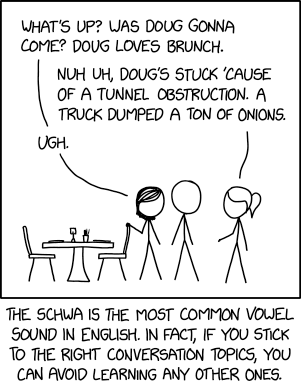Carol Beggy. Pencil. New York: Bloomsbury, 2024. xiv + 136 pages. $14.95 paper.
This small book is a big disappointment. It’s a volume in the series Object Lessons, short books devoted to the contemplation of everyday things: barcodes, hyphens, rust. Other volumes in this series might be terrific. But Pencil is not.
The first sentence to bring me up short, on page three, was about Henry Petroski’s The Pencil: A History of Design and Circumstance:
He not only details the history of pencil-making but breaks down the process of its manufacture.I noticed that the word its has no referent. A possible revision:
He not only details the history of pencil-making but breaks down the process of the pencil’s manufacture.But don’t they amount to the same thing? Better:
He details both the history of pencil-making and the modern manufacturing process.Am I being picky? Let’s see.
On page six:
A pencil used to be the go-to tool for when a cassette tape needed to be rewound.A possible revision:
The pencil was once the go–to tool for rewinding a cassette tape.On page nineteen:
The Musgrave Pencil Company is family-owned and operates out of Shelbyville, TN, which was dubbed “Pencil City, USA,” because a half dozen manufacturers once had factories in the Middle Tennessee town.A possible revision:
The family-owned Musgrave Pencil Company is based in “Pencil City, USA,” the Middle Tennessee town of Shelbyville, once home to a half dozen pencil manufacturers.Many sentences are, well, unnecessarily cluttered. On page eighty-three:
When writing his book on the pencil, Petroski devotes the opening of his first chapter to Thoreau and how he made lists of everything he used each day, what was in his cabin in the woods, and the animals, trees, and weather he spotted along the way.A possible revision:
Petroski begins The Pencil with Thoreau and his lists: of the things he used each day, the contents of his cabin, the animals, trees, and weather conditions he observed.Often the parts of a sentence can be rearranged to the writer’s (and reader’s) advantage. On page eighty-one:
Tucked into a back corner of the historic cemetery are the graves of some of the best-known US writers and thinkers in the mid– to late-nineteenth century along Authors Ridge.A possible revision, putting all the details of location in one place:
Tucked into a back corner of the historic cemetery is Authors Ridge, which houses the graves of some of the best-known nineteenth-century American writers and thinkers.And often the writing is marred by plain carelessness. Many sentences lack necessary punctuation. Here’s one, from page fifty-three:
The problem is that when you spot these claims there never appears to be any attribution and thousands of these references show up in searches.Elsewhere, words are missing. On page fifty-eight:
I learned a lot from the other members then and still [continue to learn?].On page sixty-seven:
I know that there are some out [there?] confused by the thought that there are members of a pencil collecting group who travel great distances to meet with their fellow collectors.That sentence could benefit from rewriting to eliminate the repeated “that there are”:
I’m sure some people are amused by the idea of pencil collectors traveling great distances to meet.And back on page twenty-two, there’s just a mess:
the Blackwing 602, which it’s distinctive, flattened ferruleI don’t know what accounts for such writing. In an afterword Beggy mentions a missed deadline and “life, health, and the world such as it is in 2023” getting in the way of her finishing the book. What I do know is that Bloomsbury, a reputable publisher, put this book out, as it is, and is charging $14.95 for it. Bloomsbury, that’s unconscionable.
I suspect that Mary Norris’s Between You & Me: Confessions of a Comma Queen (2015) strongly influenced Pencil. Like Norris, Beggy has worked as an editor (at The Boston Globe ) and has written a chatty, digressive book. But Norris’s book has a premise — her life as a copyeditor at The New Yorker — that admits of manifold personal asides and digressions. Beggy’s subject is the pencil. Many of the asides and digressions in Pencil have little to do with that subject (or object).
My favorite bit in Pencil : Beggy’s explanation of why reporters take three writing instruments with them on assignment: ballpoint pen, felt-tip pen, and pencil. In those paragraphs the pencil and the personal mesh nicely.
Related reading
All OCA pencil posts (Pinboard)
[An excerpt from a Stephen Sondheim interview that I posted in these pages appears in this book, properly credited. But credit should really have gone to the site with the interview itself.]













